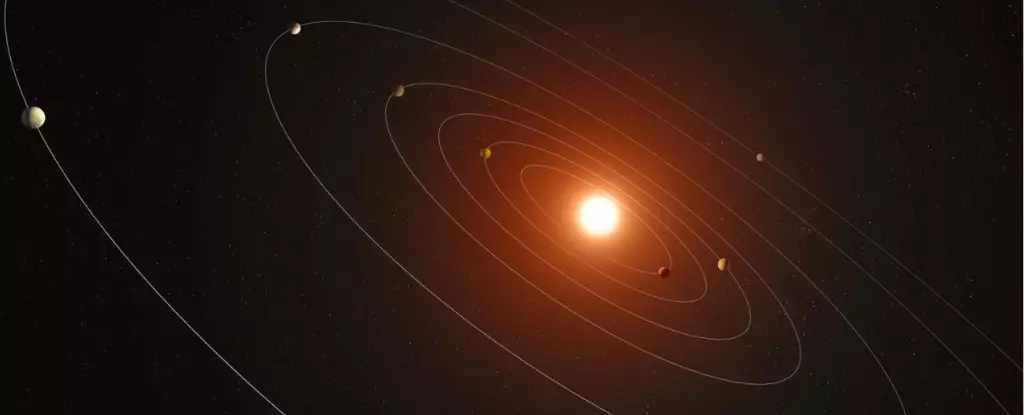After a successful nine-year run, NASA’s Kepler mission came to an end in 2018. During its operation, the space telescope made groundbreaking discoveries, detecting thousands of exoplanets. One notable find is the Kepler 385 planetary system, situated approximately 4,670 light-years away. This system has captivated exoplanet scientists since its initial confirmation in 2014, and now, with new data and refined analysis methods, the story of Kepler 385 continues to unfold.
In a recent publication, titled “Updated Catalog of Kepler Planet Candidates: Focus on Accuracy and Orbital Periods,” lead author Jack Lissauer and his team at NASA’s Ames Research Center have produced an updated catalogue of Kepler planet candidates. This revised catalogue provides the most accurate list to date, enabling astronomers to delve deeper into the characteristics of these exoplanets.
The catalog encompasses all known candidates that orbit and transit only one star, including the intriguing Kepler 385 system. This particular system stands out with its remarkable configuration of seven planets in close proximity to their star, basking in its intense heat. While larger than Earth, these planets remain smaller than Neptune. Kepler 385, slightly larger and hotter than the Sun, stands out as one of the few stars boasting more than six planets or planet candidates.
At the heart of the Kepler 385 system resides its two innermost planets, both slightly larger than Earth. According to the updated catalogue, these planets are likely rocky, possibly even possessing thin atmospheres. As we move further from the star, the remaining five planets reveal themselves. These planets have radii about twice as large as Earth’s and are presumed to bear thick atmospheres.
Co-author Jason Rowe, from Bishop’s University in Quebec, Canada, emphasizes, “Our revision to the Kepler Exoplanet catalogue provides the first true uniform analysis of exoplanet properties.” This comprehensive analysis enables researchers to gain a deeper understanding of these distant worlds, compare them to our own Solar System, and explore the intricacies of individual systems like Kepler-385.
The updated Kepler catalogue extends far beyond the Kepler 385 system and encompasses approximately 4,400 planet candidates and 700 multi-planet systems. With improved stellar measurements obtained from the ESA’s Gaia spacecraft, the researchers were able to examine the distribution of transit durations, a significant aspect in studying exoplanet distributions.
Transit durations provide crucial information about orbital eccentricities, which range from circular to highly elongated orbits. While individual eccentricity measurements are scarce, the team developed techniques to characterize the distribution of eccentricities across a population of transiting exoplanets. This novel approach led to new insights regarding the nature of planetary orbits in multi-planet systems.
Co-author Eric Ford from Penn State University comments on the findings, stating, “Our new result is a more direct and model-independent demonstration that systems with more transiting planets have more circular orbits.” This conclusion challenges previous assumptions that smaller planets and systems with more transiting planets exhibit smaller orbital eccentricities.
Although Kepler 385 may not be a promising candidate for habitability, with all seven planets situated well inside its star’s habitable zone, this new release of Kepler data is not focused on the potential for life. Instead, it aims to present an updated and enhanced catalogue, surpassing its predecessors in accuracy and detail.
The authors of the publication acknowledge the longevity and significance of the Kepler mission, noting, “It has been more than a decade since Kepler ceased its collection of data from its prime field of view. Nevertheless, the list of Kepler planet candidates remains the largest and most homogeneous collection of exoplanets known.” With this new abundance of data, the possibilities for future insights and discoveries are immense.
As we bid farewell to the Kepler mission, its legacy lives on through the multitude of exoplanets it unveiled. The Kepler 385 system, with its unique configuration and updated insights, adds to the richness of our understanding of the cosmos. With the new catalogue providing a wealth of information on thousands of exoplanets, the door to new discoveries remains wide open. The ongoing exploration of these distant worlds promises a continued expansion of our knowledge and fuels our curiosity about the boundless universe that surrounds us.


Leave a Reply